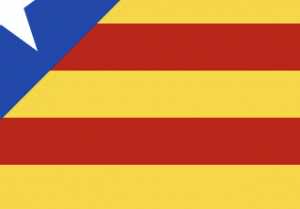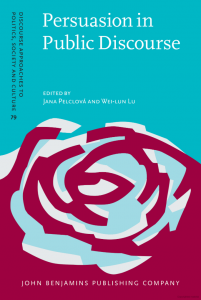In the last years Catalan audiences have observed how Catalan and Spanish newspapers tend to differ in the information they publish on the same event, particularly when the item of news is about political issues associated with Catalan independence. In these situations, media actors, namely Catalan and Spanish journalists, are coerced to stand in for the interests of their employer’s beliefs and, unfortunately, they cannot be blamed for that. We all admit that the media products that we listen to, watch or read, are not the real events, but representations of them. Journalists construct these representations out of different meaning triggers, such as photographs, video footage or text (language) that, because of their very nature, magnify the effect of the portrayed sections of the event and obliterate other parts of the event by not mentioning them. Acting this way, journalists are prone to report on one same event favouring specific ideological standpoints and, therefore, biasing, and sometimes misrepresenting, the event. How can this slanted coverage of the news be so and still be fair and truthful? Some may say that human communication is imperfect, faulty or incomplete. Others may argue that this is the magic of communication. Beyond what we think of it, the codification of reality into text, photographs or footage is a very complex venture, particularly when we need to persuade the receiver to interpret a specific message.
This is what Calle Rosingana (2019) discusses in his article In Search of Meaning: ‘The Hours’ and Meaning Construction, published by Círculo de Lingüística Aplicada a la Comunicación, Universidad Complutense de Madrid. The discussion in the article is not centred on the context of politics, though. Instead, it has a cinematic feel since what is analysed is a short scene of the movie The Hours (2002), by Stephen Daldry. However, the article identifies the way in which certain meanings originate from the participation of a multiplicity of cues that emerge from different modalities (language, sound and image) that interweave and collaborate to reach the same end, the construction of meaning. The analysis draws from the implementation of specific linguistic and cognitive mechanisms that trigger the generation of the audience’s unconscious construction of meaning. The corpus of the analysis dissects an excerpt of David Hare’s script of the movie, that acts as the backbone of the analysis. The analysis is cross-referenced with parallel modality inputs (Kress 2009), such as specific filmic or visual details, found either in the scene or the rest of the movie. The approach of this qualitative study is mainly cognitive making special emphasis on the three types of underspecification proposed by Radden (2007). It also draws from Langacker’s (2008) proposals related to attention and perspective to identify figure-ground relations as determinant in the moulding of the characters and their ideological standpoints in the scene. Lakoff’s (2003) conceptual metaphor theory and the application of the theory of mental spaces (Fauconnier 1994, 1997) and conceptual integration (Fauconnier and Turner’s 2002) are also of particular interest to explore metaphorical conceptions and blends.
For those interested in finding out more on how meaning is generated and feel like reading the article, hit the following link In Search of Meaning: ‘The Hours’ and Meaning Construction. Once there, feel free to download the pdf file with the article.
Referències:
Calle Rosingana, G. (2019). In Search of Meaning: ‘The Hours’ and Meaning Construction. Círculo De Lingüística Aplicada a La Comunicación, 79, 187-202. https://doi.org/10.5209/clac.65655
Fauconnier, G. (1994). Mental spaces: aspects of meaning construction in natural language. Cambridge: Cambridge University Press. DOI: http://dx.doi.org/10.1017/ CBO9780511624582
Fauconnier, G. (1997). Mappings in thought and language. Cambridge: Cambridge University Press. DOI: ttp://dx.doi.org/10.1017/CBO9781139174220
Fauconnier, G. & M. Turner. (2002) The Way We Think: Conceptual Blending and the Mind’s Hidden Complexities. Basic Books. New York: Perseus Books Group.
Kress, G. (2009). Multimodality: A social semiotic approach to contemporary communication. London: Routledge. DOI: http://dx.doi.org/10.4324/9780203970034
Lakoff, G. & M. Johnson. (2003) Metaphors we live by. Chicago: University of Chicago Press. DOI: http://dx.doi.org/10.7208/chicago/9780226470993.001.0001
Langacker, Ronald W. (2008). Cognitive Grammar: a Basic Introduction. Oxford: Oxford University Press.
Radden, G., Köpcke, K., Berg, T. & Siemund, P. (eds.) (2007). The construction of meaning in language. In Aspects of Meaning Construction. Amsterdam: John Benjamins Publishing.



 A new book, Persuasion in Public Discourse: Cognitive and Functional Perspectives, will be published very soon by John Benjamins Publishing Company within the prominent series “Discourse Approaches to Politics, Society and Culture”. The editors are
A new book, Persuasion in Public Discourse: Cognitive and Functional Perspectives, will be published very soon by John Benjamins Publishing Company within the prominent series “Discourse Approaches to Politics, Society and Culture”. The editors are